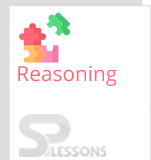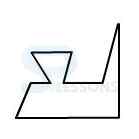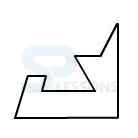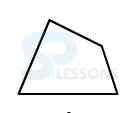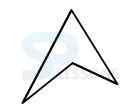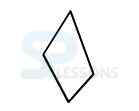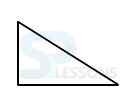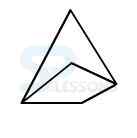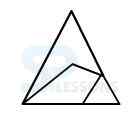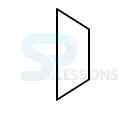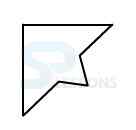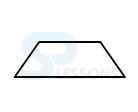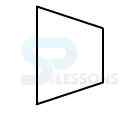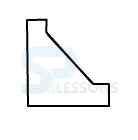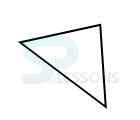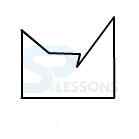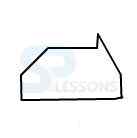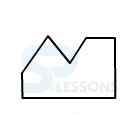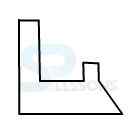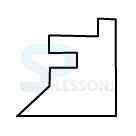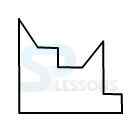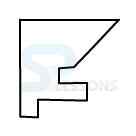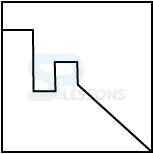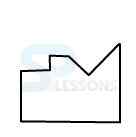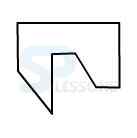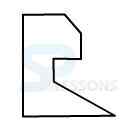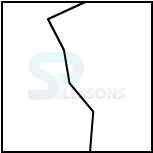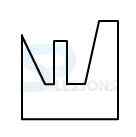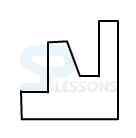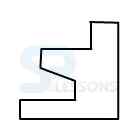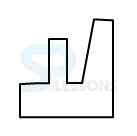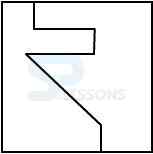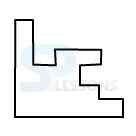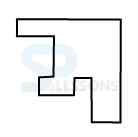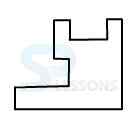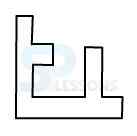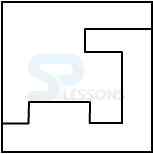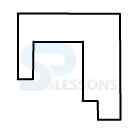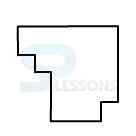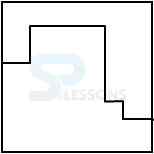 Description
Description
This section manages the mind teasing problems of development of squares by the blend of a few sections by selecting them from a gathering of given choices (for the most part five in number). The following discussion will help us in solving of such kind of problems:
- Select a piece which contains a right point between two adjoining external edges.
- Attempt to fit another piece in its hallow spaces.
- If you can't locate any such piece, select another piece having a right angle.
- Repeat the methodology with various arrangements of such pieces.
- At long last, with the two pieces fitting into each other, locate the third piece which fits into the other two chose ones, to get finish square.
Reasoning Ability -BANKING|SSC|RAILWAYS|INSURANCE|RECRUITMENT EXAMS – EBOOKS
 Model
Problems
Model
Problems
Model 1: Given below are five alternative figures marked as A, B, C, D and E. Select the figure which does not fit into any of the remaining alternative figures to form a complete square.
A.
B.
C.
D.
E.
Solution:
By observing clearly, figure A fits into figure C to form a complete square and also figure B fits into figure E to form a complete square as shown below:
Figure D doe not fit any of the alternative figure to form a complete square.
Therefore, figure D is the answer.
Model 2: Choose three out of the following five alternative figures which together form one of the four options namely a, b, c, or d and when fitted together will form a complete equilateral triangle.
A.
B.
C.
D.
E.
OPTIONS:-
a) ABC
b) BCD
c) ABD
d) ABE
Solution:
Select the largest figure which contains at least one angle of 60 degrees.
Clearly, figure B is larger.
Now, figure C fits into it as shown below:
Atlast, figure D fits into the above combination to form a complete equilateral triangle as shown below:
Therefore, the figures B, C and D fit into each other to form a complete equilateral triangle.
Hence, option (b) is correct answer.
Model 3: A set of five alternative figures A, B, C, D and E followed by a set of four alternatives a, b, c and d is provided. It is required to select the alternative which represents three out of the five alternative figures which when fitted into each other would form a complete square.
A.
B.
C.
D.
E.
OPTIONS:-
a) ACD
b) CDE
c) BCD
d) ACE
Solution:
Combination of figures B, C and D, the square will be formed as shown below:
Therefore, option (c) is correct answer.
Model 4: A set of five alternative figures A, B, C, D and E followed by a set of four alternatives a, b, c and d is provided. It is required to select the alternative which represents three out of the five alternative figures which when fitted into each other would form a complete square.
A.
B.
C.
D.
E.
OPTIONS:-
a) ACD
b) ADE
c) ABE
d) ABD
Solution:
Combining figures A, D and E, square is formed as shown below:
Therefore, option (b) is the correct answer.
Model 5: Five alternative figures namely A, B, C, D and E are given. Frim the five figures, two pairs of figures are obtained such that each pair forms a complete square. Select the odd figure which does not fit into any of the other alternative figures to form a complete square.
A.
B.
C.
D.
E.
Solution:
Figures A and E form a square.
Other pair is figure B and D, also form a square.
The odd figure which does not fit into any of the other alternative figures to form a complete square is figure C.
Hence, figure C is the correct answer.
Model 6: A figure X is given, followed by four other alternative figures marked A, B, C and D. It is required to select the one figure from the alternatives, which fits exactly into figure X to form a complete square.
X.
A.
B.
C.
D.
Solution:
By observing, it is clear that figure D fits exactly into figure X to form a complete square as shown below:
Therefore, figure D is the correct answer.
Model 7: A figure X is given, followed by four other alternative figures marked A, B, C and D. It is required to select the one figure from the alternatives, which fits exactly into figure X to form a complete square.
X.
A.
B.
C.
D.
Solution:
By observing, it is clear that figure B fits exactly into figure X to form a complete square as shown below:
Therefore, figure B is the correct answer.
Model 8: A figure X is given, followed by four other alternative figures marked A, B, C and D. It is required to select the one figure from the alternatives, which fits exactly into figure X to form a complete square.
X.
A.
B.
C.
D.
Solution:
By observing, it is clear that figure D fits exactly into figure X to form a complete square as shown below:
Therefore, figure D is the correct answer.
Model 9: A figure X is given, followed by four other alternative figures marked A, B, C and D. It is required to select the one figure from the alternatives, which fits exactly into figure X to form a complete square.
X.
A.
B.
C.
D.
Solution:
By observing, it is clear that figure C fits exactly into figure X to form a complete square as shown below:
Therefore, figure C is the correct answer.
Model 10: A figure X is given, followed by four other alternative figures marked A, B, C and D. It is required to select the one figure from the alternatives, which fits exactly into figure X to form a complete square.
X.
A.
B.
C.
D.
Solution:
